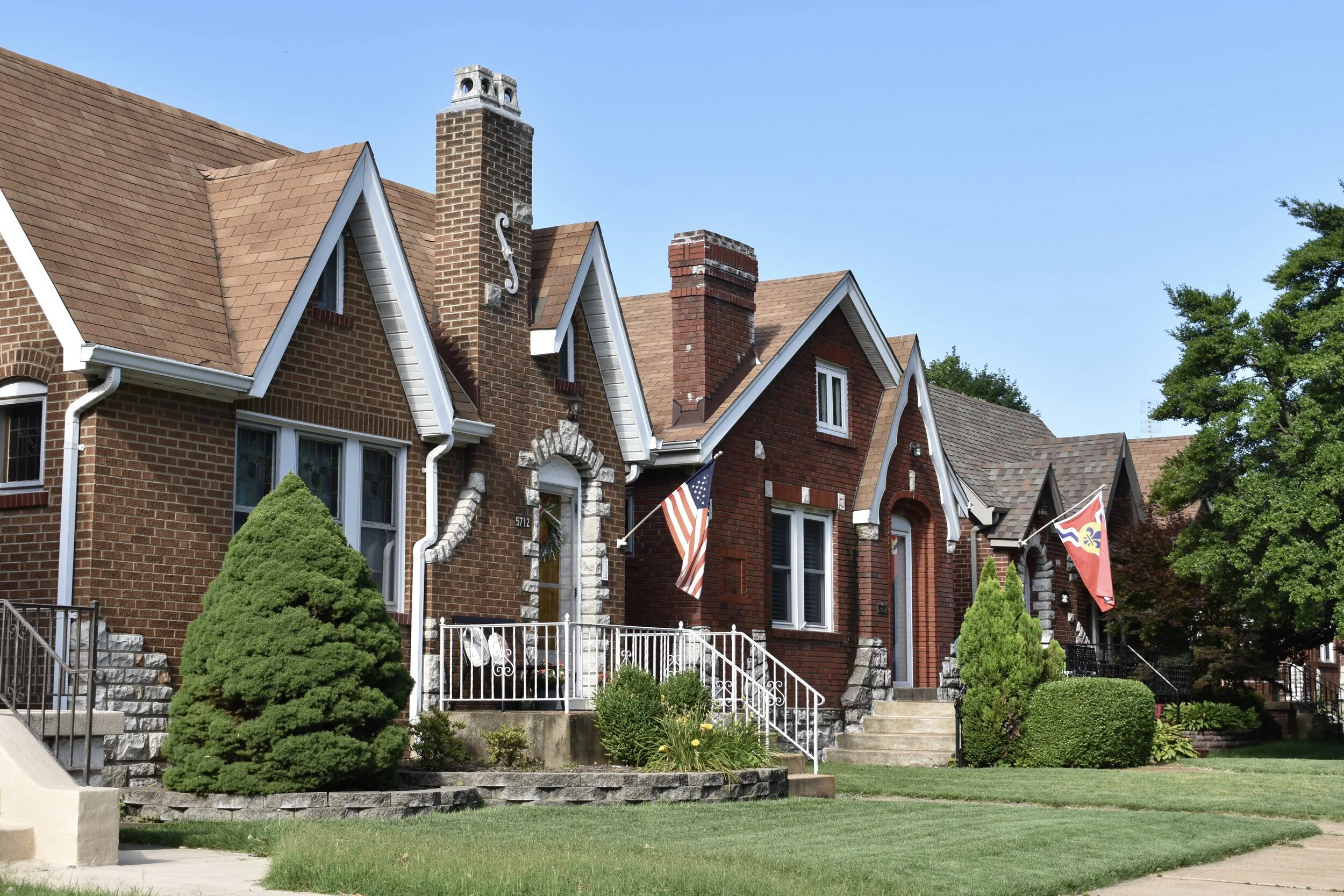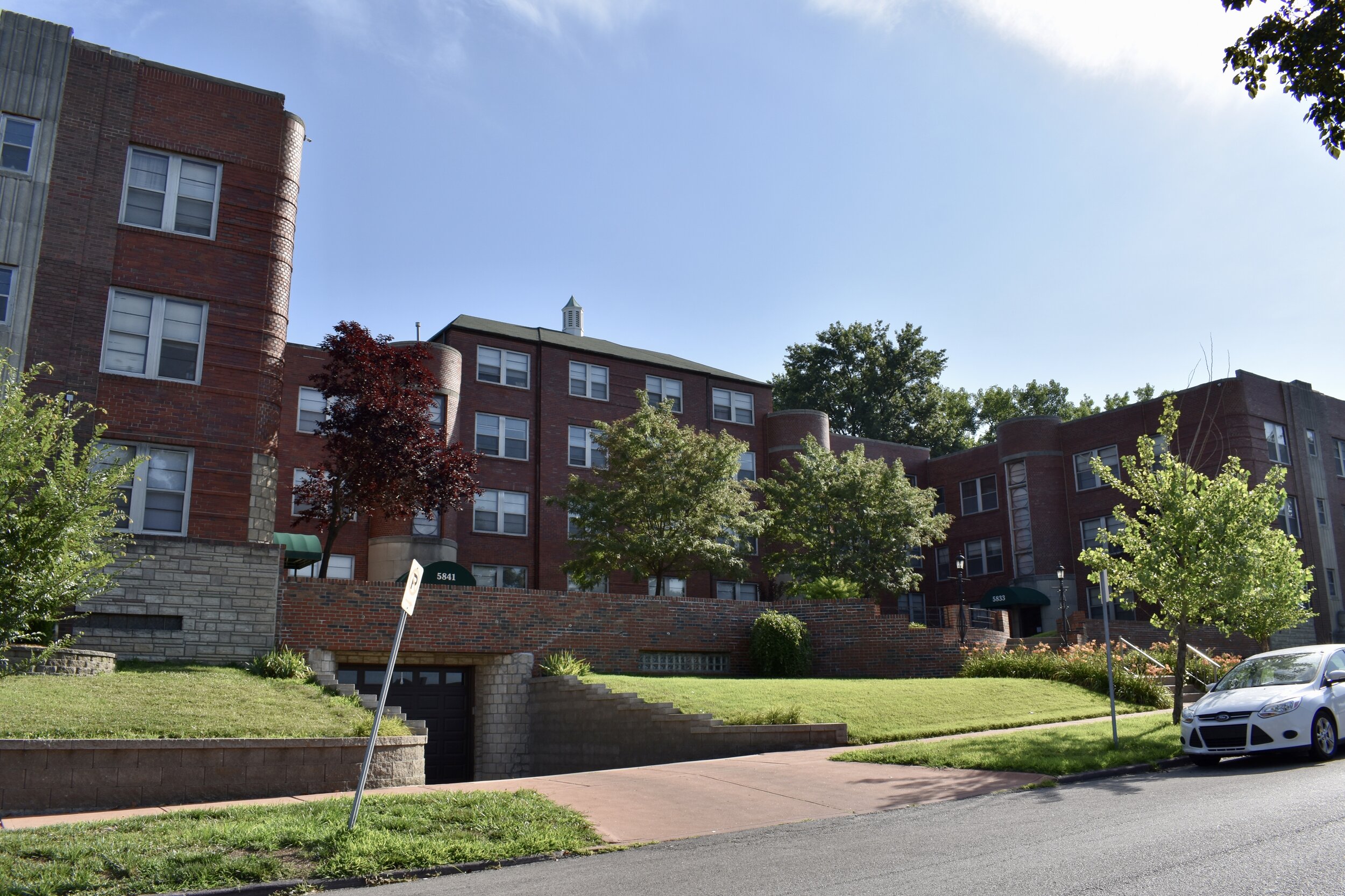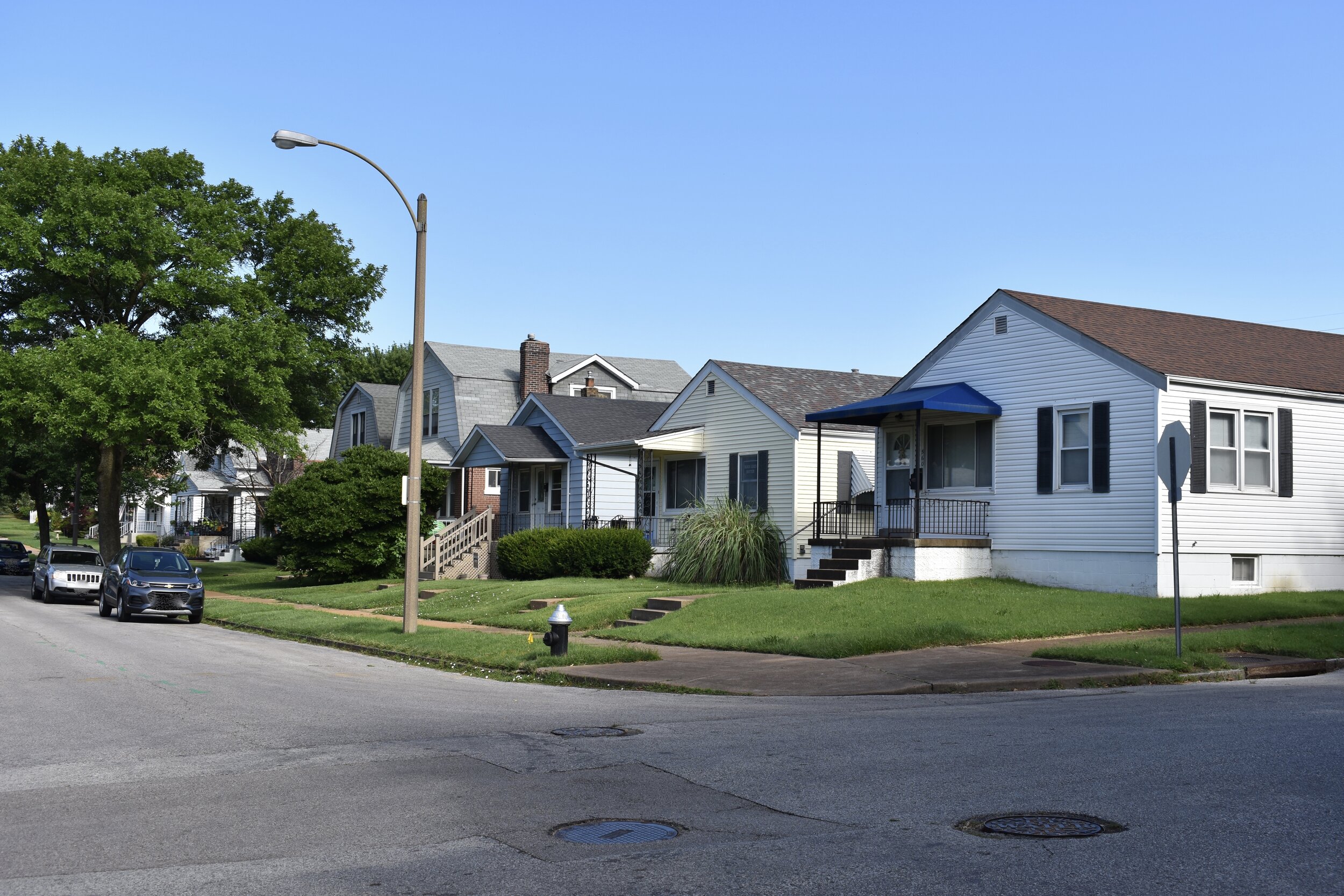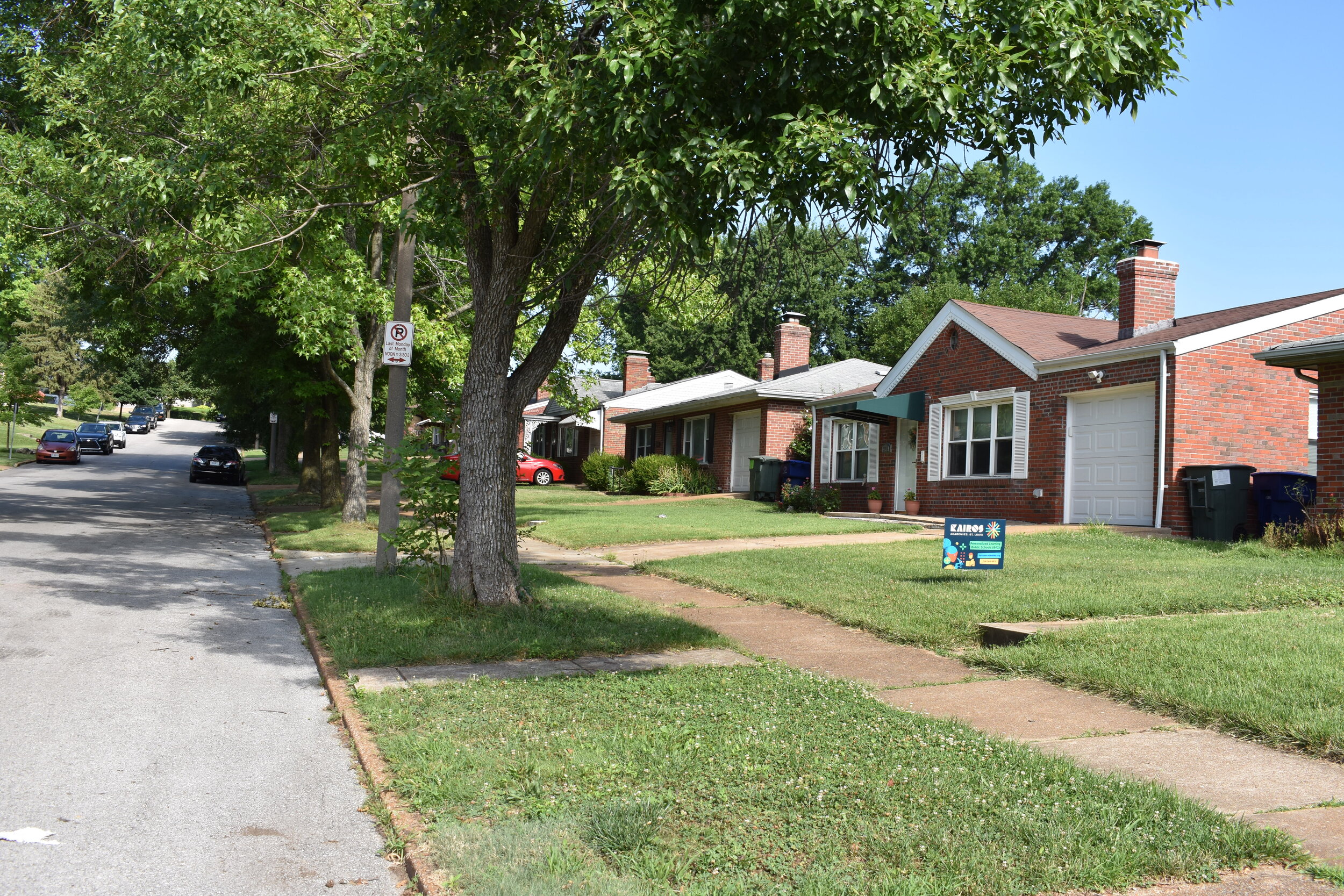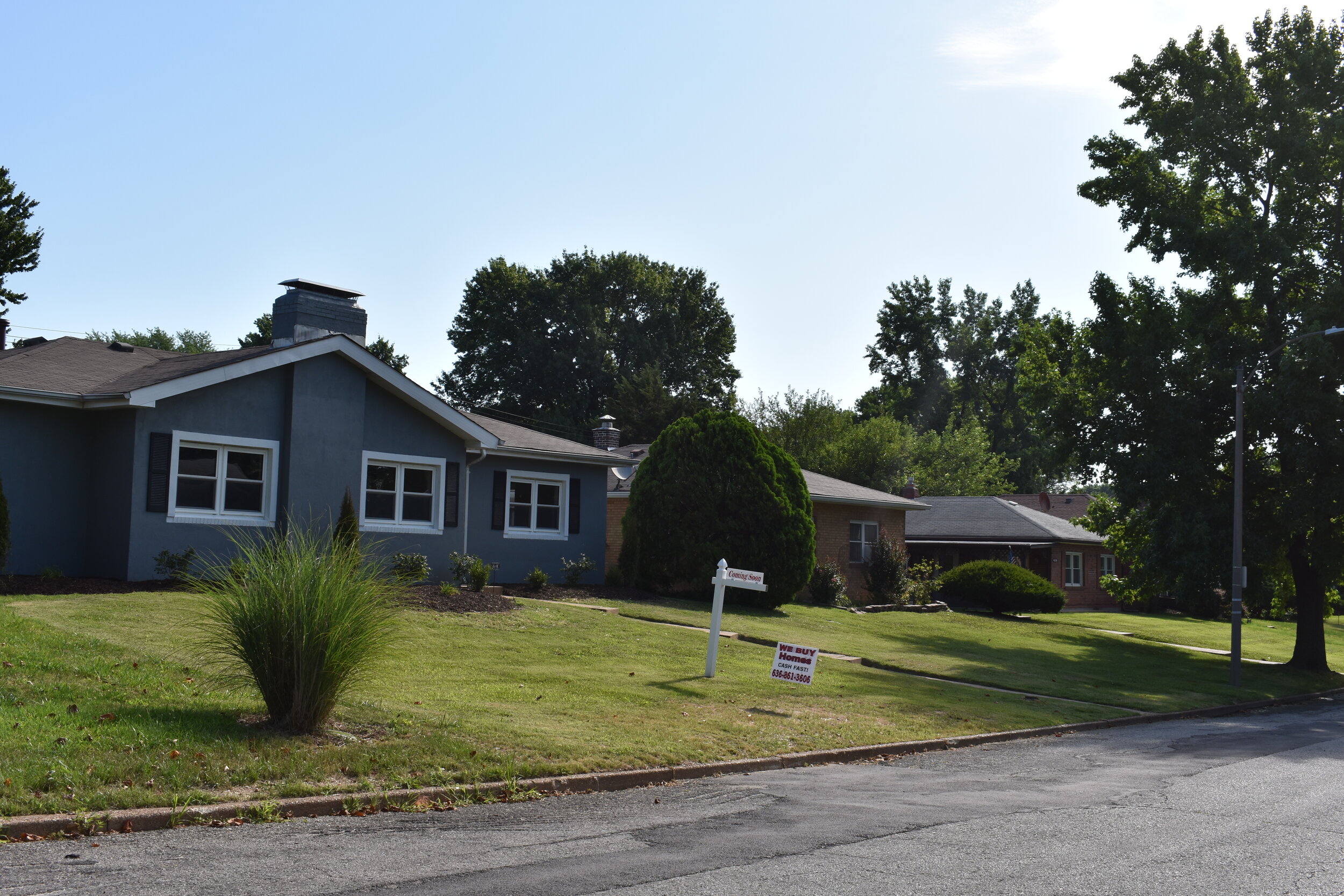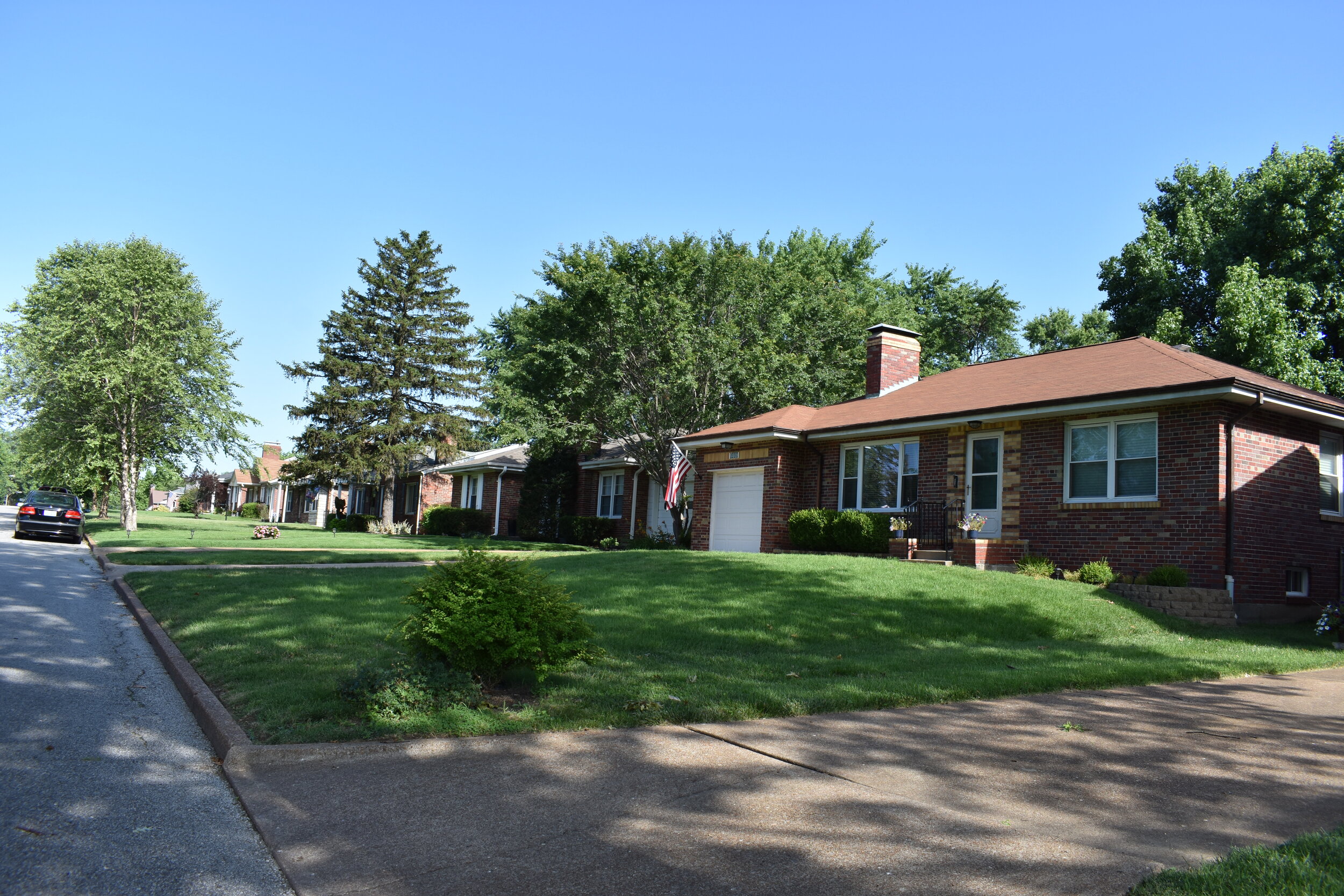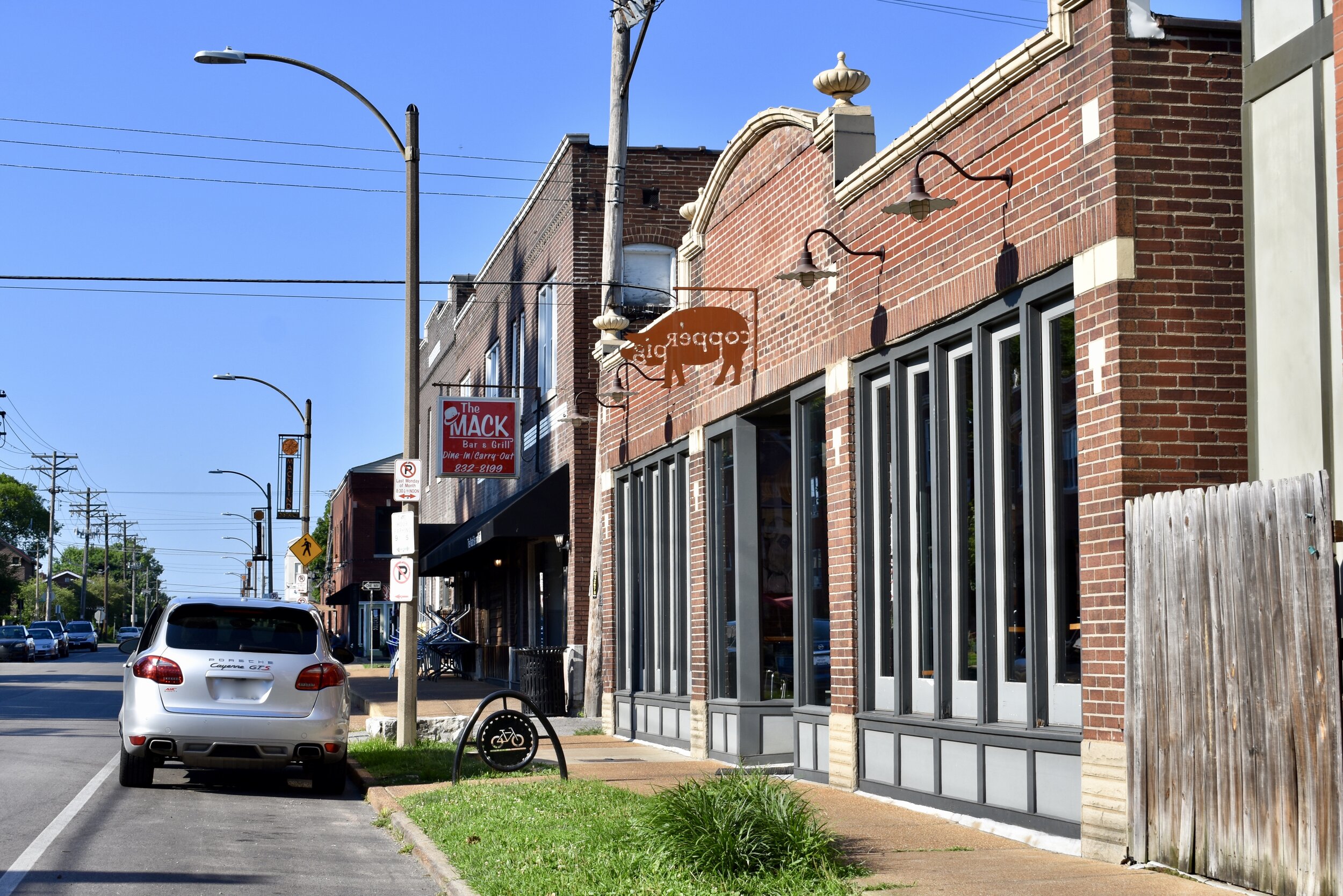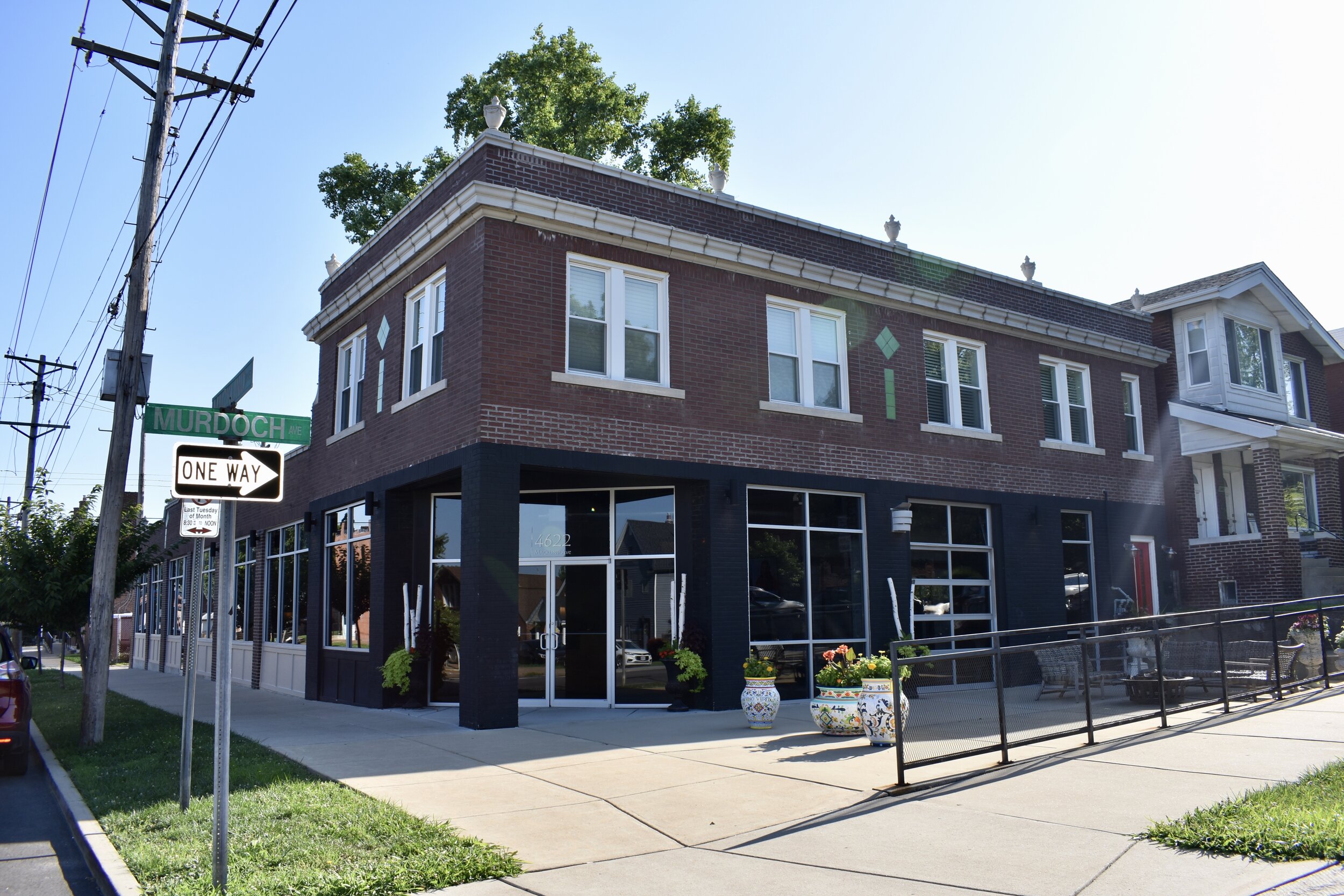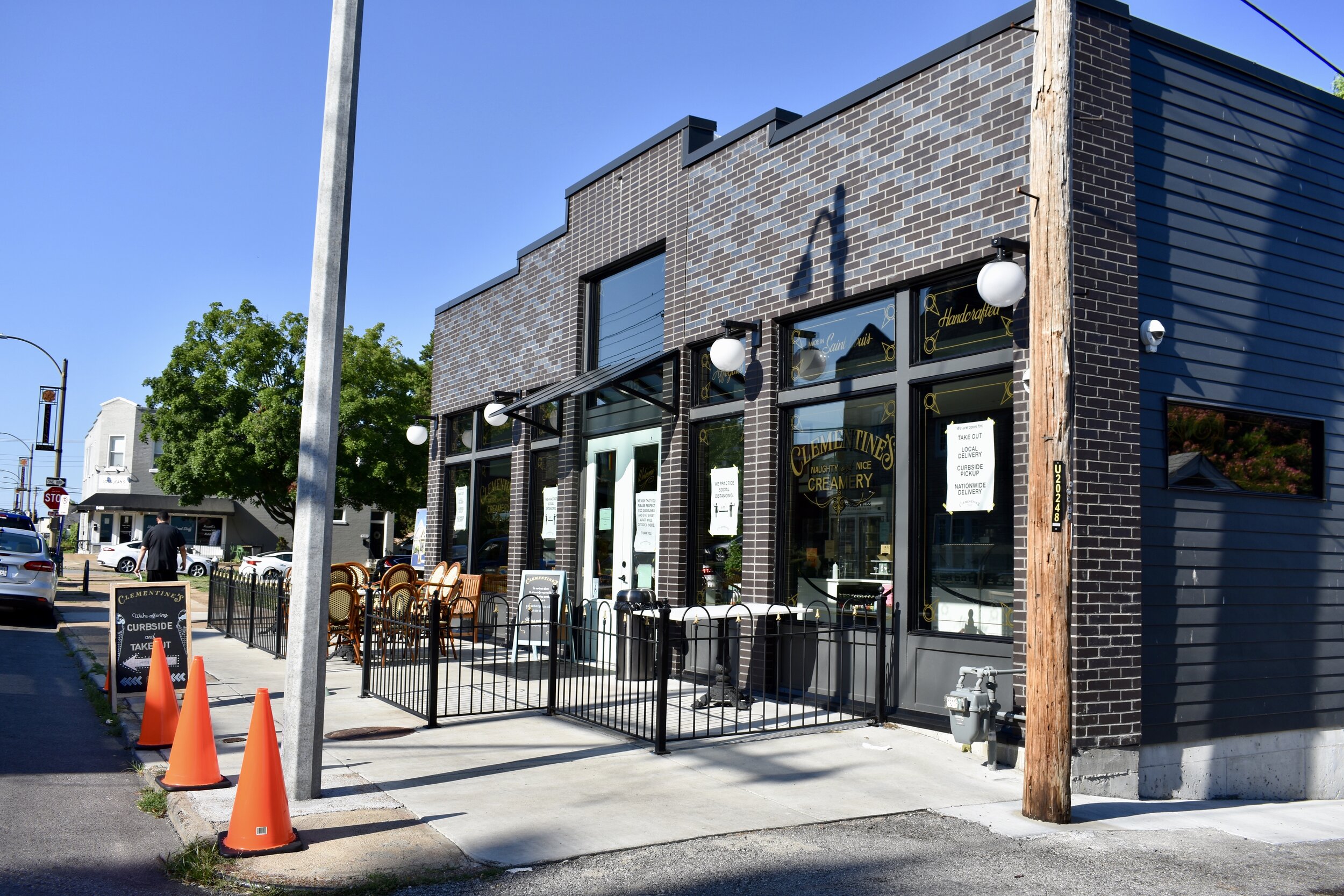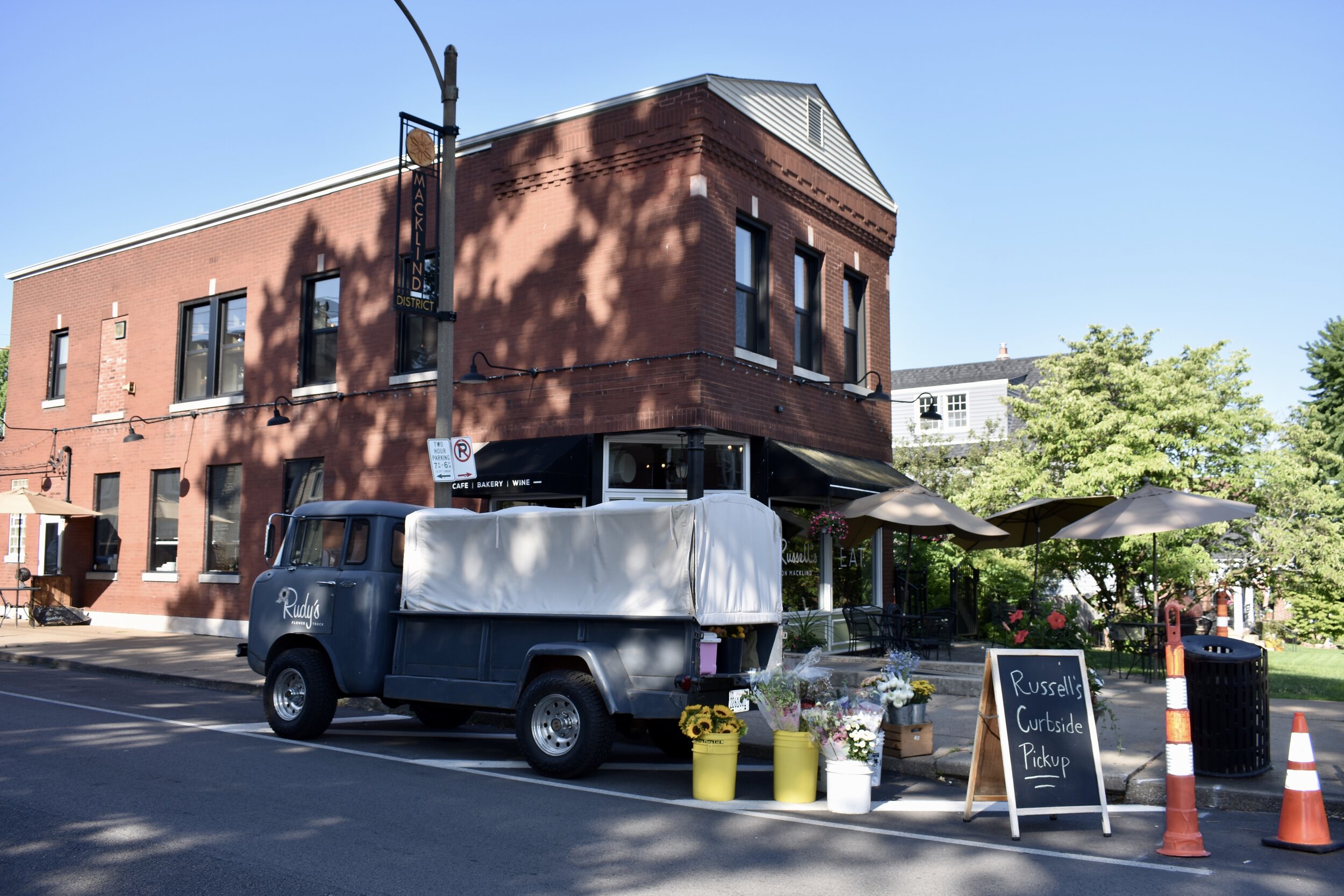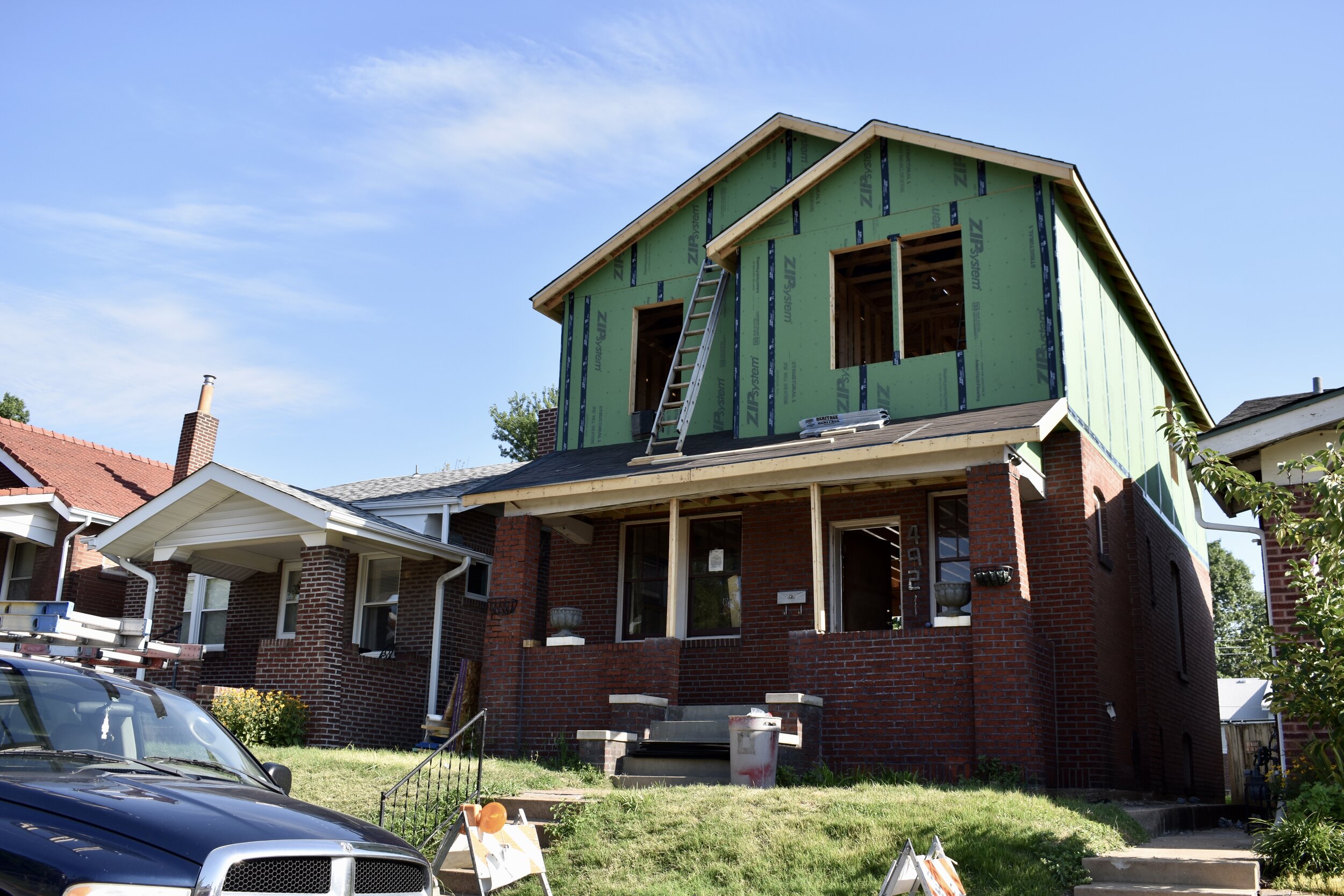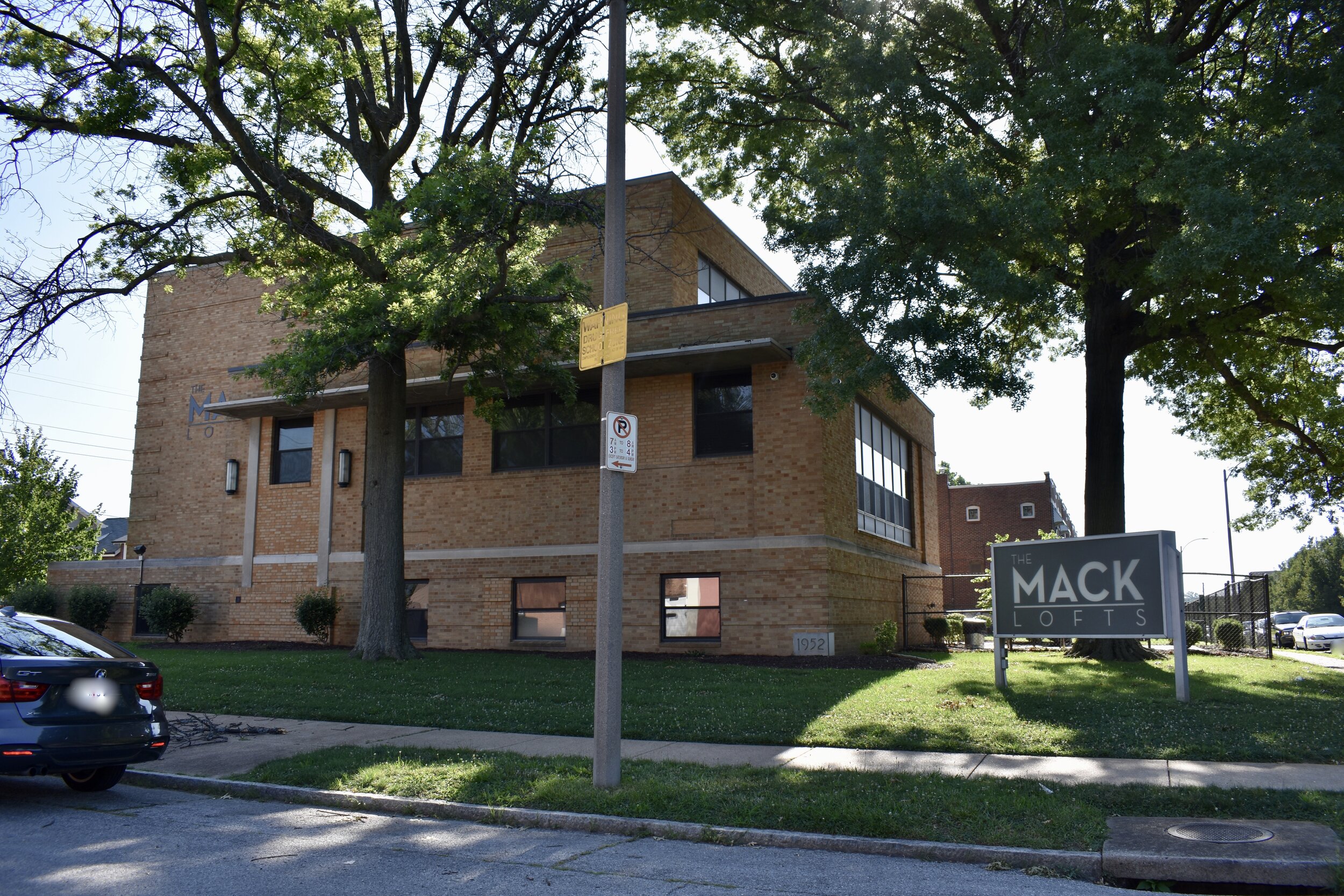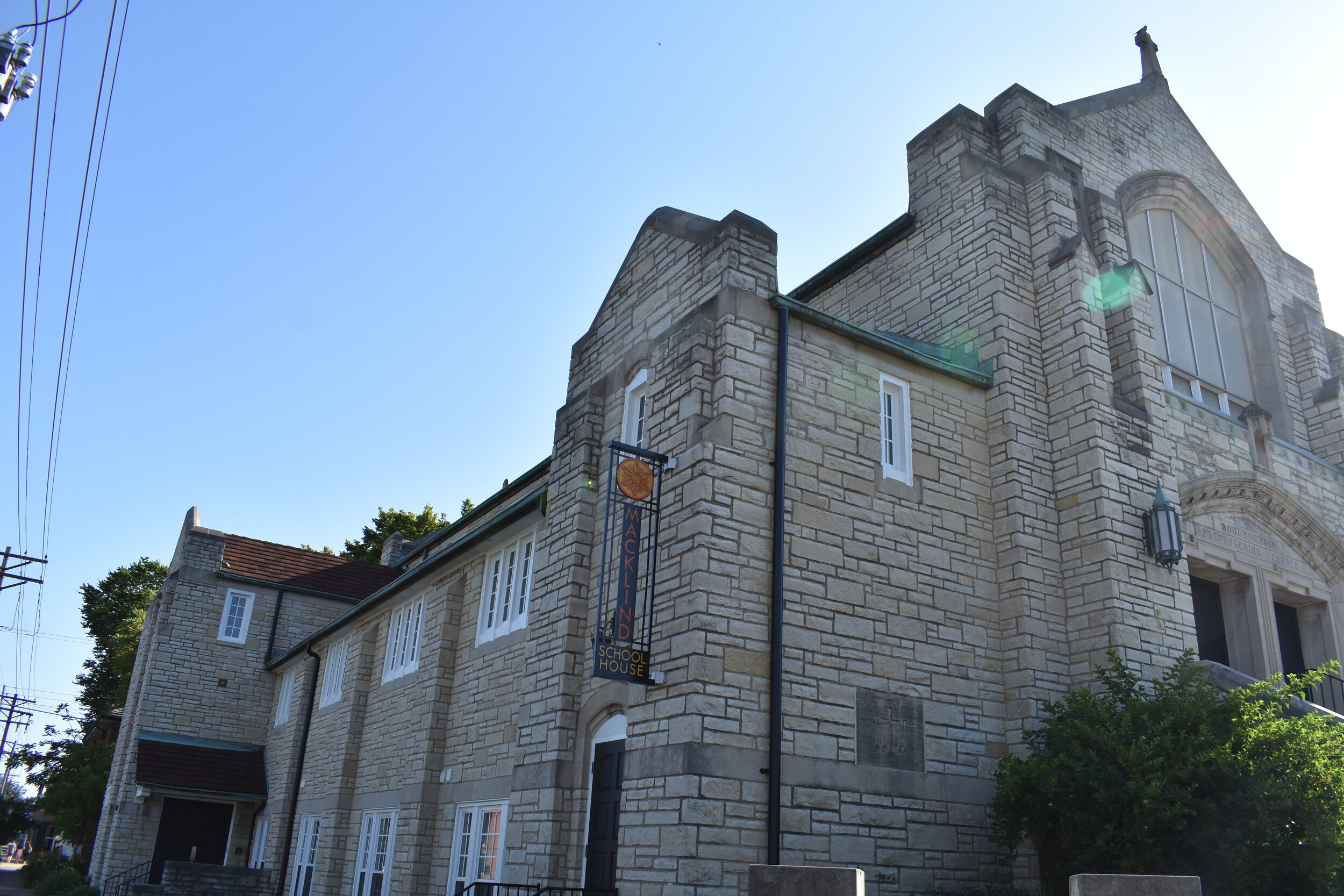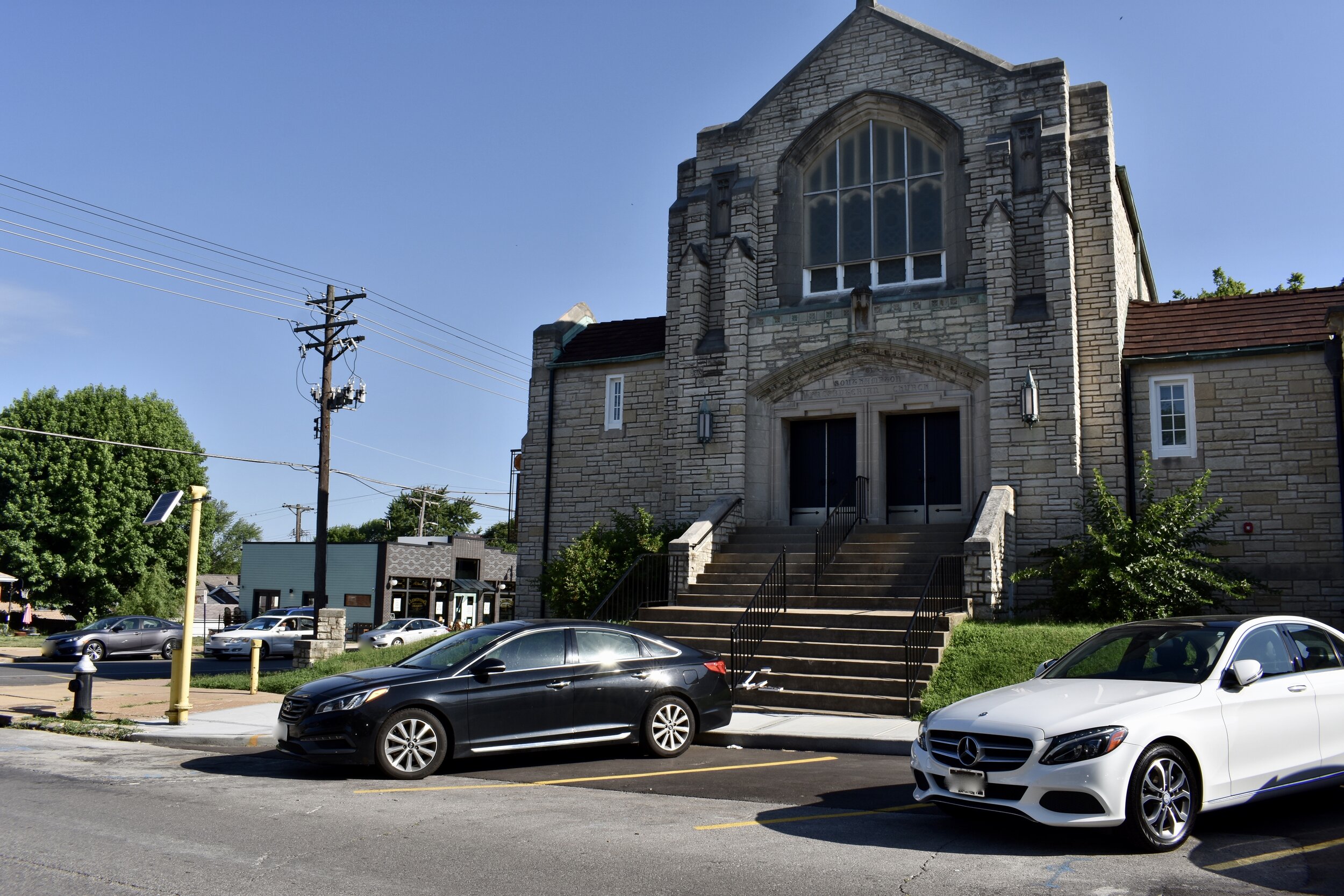Southampton is a south St. Louis neighborhood located north of Eichelberger Street, south of Chippewa Street, west of Kingshighway Boulevard and east of Hampton Avenue:
Southampton had a 3% gain in population from 1990 - 2000! Way to go Southampton or SoHa (as the locals have tagged their neighborhood)! Of the 7,793 residents counted, 92% were white, 3% black, 2% Hispanic/Latino, 1% Asian.
3,675 housing units existed, a whopping 95% of which were occupied, split nicely 66% owned/34% rented.
2010 Census data showed a slight decrease in population from 7,793 to 6,904. The constituency is growing more diverse with 86% white, 8% black, 3.5% Hispanic/Latino and 1.2% Asian.
The 2020 Census counted 6,647, down 4%. Racially, it is 82% white, 9% Black, 6% 2+ races, 4% Hispanic/Latino. It gained 43 housing units and occupancy is 93%.

A little background on SoHa from their website:
The first homes in the Southampton Neighborhood were built around 1905. The brick "arts and crafts" homes were constructed primarily in the 1930's. Original residents say this type of home took about one year to build. Much of the original tract of land part of the Decker Farm, was developed by the Merchantile Trust Company.
Mr Sihrett, supervised the building of the Subdivision and named it "Southampton" after a town in his native England. Many other streets in Southampton are also named after towns in England: Nottingham, Hampton, Devonshire, Lansdowne, Murdoch, Sutherland, Brannon and Macklind.
Early Southampton residents carried water to their homes from a spring at Nottingham and Kingshighway until a water main was contructed.
This area was one of several chosen as a possible site for the 1904 World's Fair It was determined to be almost impossible to run adequate transportation facilities to the Southampton area, and Forest Park ended up as the chosen location.
Here's the history on some of the street names in SoHa:
Bancroft: Named for historian George Bancroft.
Brannon: Named for landowners Thomas and Louisa Brannon.
Delor Street: Named after the founder of Carondelet, Clement Delor.
Eichelberger Street: Named in honor of Doctor George F. Eichelberger, a member of Carondelet’s first City Council, Eichelberger Street originally was named Clark Street for Lewis & Clark Expedition explorer William Clark.
Itaska: Named after Lake Itasca in Minnesota.
Kingshighway: Named for the second oldest railroad in Missouri which ran from St. Louis to New Madrid.
Murdoch Ave.: Named after John Murdock, a farmer.
Neosho: Named after the Neosho River in Kansas; An Osage Indian word for clear spring.
Sulphur Street: Once had a sulphur spring on it near the intersection of Sulphur and Manchester Road.
Walsh Street: Named for John B. Walsh, the first mayor of Carondolet.
Wherry Ave.: Formerly a creek which was paved over; named after Mackey Wherry, a surveyor and engineer.
Winona: Named for the daughter of Carl Wimar, the artist who painted the dome in the Old Courthouse.
I guess the fact that Wherry used to be a creek explains the strange angle at which the road diagonally criss-crosses the otherwise perfect recti-linear grid. By the way, you have to respect this street grid...it's not closed off! No dead end streets or Schoemehl pots blocking traffic!
There are many quality, convenient services within SoHa. You have the fully occupied Hampton Village shopping mall at the busy corner of Hampton and Chippewa which includes a quality Schnucks, JC Penney's, shoe store, woman's clothing stores, gym, doctor/dentists offices, chain restaurants, chain barber, and Johnnie Brocks.


There are several other services and restaurants on the perimeter of the neighborhood along Hampton, Chippewa and Kingshighway including chain pizza, several banks, florist, auto mechanics, a ravioli outlet, a Mexican restaurant, etc. Here are some sights along Kingshighway, Chippewa and Hampton, including my favorites the Kuna Building, The Record Exchange (former Buder Library) built in 1961 and the Hampshire Building:





I like that little barber shop tucked between the larger building along Kingshighway and the start of the residential properties.





^This former auto parts store will be the new home to a Remax office. The former photography business moved out of the handsome building direct south of it.

The Record Exchange:




Not only is the outer perimeter of Southampton bustling with activity, there is also a lot of intra-neighborhood business that is very walkable and quite frankly have made SoHa a truly desirable place for a wider group of people. There is a lot of foot traffic in this neighborhood and the businesses along Macklind Avenue have helped increase the activity and foot traffic within the neighborhood. The Macklind Business District has a website explaining all the businesses. There are several bars, a coffee shop, several mechanics, sausage shop, running store, eco-store, dentists, CPA offices, etc. Here are some shots of Macklind:







There are more attractive buildings awaiting tenants and activity on the Macklind strip:

The Buder Elementary School on Lansdowne:




^This is a shot of the Patricia Beckwith outdoor classroom. Kudos to Buder and SLPS for utilizing the school grounds for an extension of the curriculum.
There is a new playground built on this property that is popular with the neighborhood kids. Southampton doesn't really have a park within it's boundaries, so this playground fills a nice gap for the residents.
There are a several churches in the neighborhood:


My favorite being Hope Lutheran:





But that's just the businesses, churches, schools and retail, the true story on Southampton is it's tidy, modestly scaled homes. It's hard to profile neighborhoods like this in that the streets are lined with home after home after home that are well cared for and similar in style. There are very few boarded up homes in this established south side neighborhood. I only found one apartment complex on Lawn that was vacant:

There are also very few empty lots/fallow ground. I didn't find one, with the exception of the fallow lot on Murdoch that was a perfectly good, rehab ready home next to Eddie's Donuts. In fact, it's hard to find a front yard or alley that's not tidy and clean. 34% of the property is rental and it is all clean as a whistle as well, with the exception of some multi-families along Chippewa.
So here are the homes that make up the majority of Southampton's area. The 1930's were good to this part of the city, there are art deco touches sprinkled amongst the gingerbread houses, Dutch colonials, arts and crafts bungalows and multi-families. And the people that live here today are good stewards of the fine homes and buildings. Congrats to Southampton for keeping one of the most tidy neighborhoods in the city. It takes a lot of time, care and money to maintain these old homes, and Southampton residents are clearly doing their part to keep this a beautiful place for the next generation.

































The closer you get to Hampton there are some vinyl sided frame homes:

Now for my ridiculous sign sighting of the day. For this one, I conjured up a back story:
Herman was spying down from his second story perch above the alley. Here came those rotten little bastards again, probably with balls in tow. Can't they have fun somewhere else? Where are their parents? First with the tennis balls against the wall, then came soccer balls, then yes the dreaded and most destructive of all balls: the baseball. It was getting worse of late, the ball play was becoming more varied and active and at times out of control...frankly, it was just too much. He'd put up with these little rapscallions for too long. Then the final straw. It was a cold winter morning when he pulled back the kitchen drape only to see them coming his way down the alley in numbers not previously seen....is that, are those, do they have hockey sticks? Aw, hell no...not on Herman's watch. He set down the coffee mug and knew what he had to do. He grabbed his robe and shuffled down the stairs to the work bench in the corner of the basement where the sign was made and duly posted once and for all:

These signs crack me up. Anyhow, Southampton is a cozy little neighborhood with some real retail, business and entertainment momentum building within it's borders.
***In July, 2020 I revisited the neighborhood and the following includes updated commentary and photos.***
Misses On Original Tour
I missed some of the more unique homes, some of which I’ll post here.
The wedge of property at Wherry, Lansdowne and Macklind in the shadow of Buder School is beautiful, and could be the northern marker of the Macklind Business District. There is a great apartment building and single-story commercial building that is ripe for retail/entertainment, a short walk from the many other commercial and entertainment tenants just south on Macklind.
I missed the fact that there are two perfectly shaded streets in Southampton, one is Sutherland from Kingshighway to Macklind. This should be a model for the rest of the neighborhood. With a little concerted effort, it could be another St. Louis Hills or Holly Hills with gorgeous mature, tree lined streets.
Lower utility bills, shade for pedestrians and curb appeal - a goal for Southampton in the future.
I also missed how the neighborhood is kind of split up into different styles; the gingerbread arts and crafts, while sprinkled in all over, are more concentrated west of Macklind and toward the south and hugging Hampton. The homes east of Macklind are more diverse including more apartments and multi-family buildings, bungalows, two-story homes, Dutch colonials, etc. The northwest section of the neighborhood has many sided and ranch houses with larger setbacks and large front yards. Ranch homes are more rare in St. Louis, so I’l include a few examples.
I also missed that there are no official city parks within Southampton, even though Christy Park is just across Kingshighway. The neighborhood was built densely for housing.
Noticeable Changes
Wow, there are so many. First of all, the Macklind Business district has drastically improved in the last ten years. Even though restaurant turnover has taken place, there is more diversity of places. Many of the empty storefronts have seen new life. The area is a straight up destination, they even have an annual street festival called Macklind Days.
There doesn’t appear to be just too many massive renovations taking place on my tour. There is little evidence of multi-family buildings being converted to single family homes.
But oh my, have there been apartments added in the form of abandoned churches, schools and banks being converted to residential. And by the looks of the nearly full parking lots, these are popular and in high demand.
SoHa Lofts - a converted credit union
Mack Lofts - former Hope Lutheran School
The most recent conversion is stunning, you should see the interior spaces. The former Southampton Presbyterian Church is now living space. Also impressive is the 45 degree angled parking along Nottingham and curb bump outs at Macklind. Kudos Southampton!
Speaking of traffic calming and accommodation of more density, speed humps have been installed on several streets to combat speeding cars off of Hampton.
Slow your roll, Tex! This is a residential neighborhood
There is also a narrowing of the intersection at Wherry and Eichelberger to make a more safe flow of traffic in and out of the neighborhood from nearby Hampton.
South Hampton has some popular dining spot
The east and west border streets are a tale of two very different tales in the last ten years. Hampton looks great with more dining, retail and good occupancy. There is actually a scene here on weekend nights. So much so, that I think Hampton is due for some significant traffic calming measures, narrowing streets, slowing traffic and adding on-street protected parking. Even widening the sidewalks to accommodate more outdoor dining should be considered.
Kingshighway on the other hand looks much rougher over the last ten years. Lots of vacancy and uncared for properties. There is hope for sure, but if were making an honest assessment, I think you’d agree things have not improved.
There are more young families here. Now that Buder School has installed new-ish playground equipment, I see parents taking their kids to play here, meeting up over coffee and talking and chatting. It’s a nice scene. There are way more pedestrians walking about, with dogs and strollers and joggers all around the neighborhood.
This neighborhood has absolutely improved and still remains spic-n-span clean and cared for.
What Are The Future Needs?
I already mentioned traffic calming on Hampton, Kingshighway is in dire need as well. I also eluded to the need for street trees to “complete” the neighborhood’s curb appeal and walkability.
I would like to see more intra-neighborhood businesses off-Macklind for an even more walkable feel.
But, if I had the magic wand and all the money, I would make a fund for the tidy multi-family landlords along Chippewa to do some environmentally responsible landscaping. The neighborhood could work with MSD and other entities to help these properties become whole and greatly improve the barren streetscape and curb appeal.
They have planted street trees along Chippewa, which was much needed.
Rows and rows of little to no front-scaping along Chippewa
Additional St. Louis City Talk Reading

